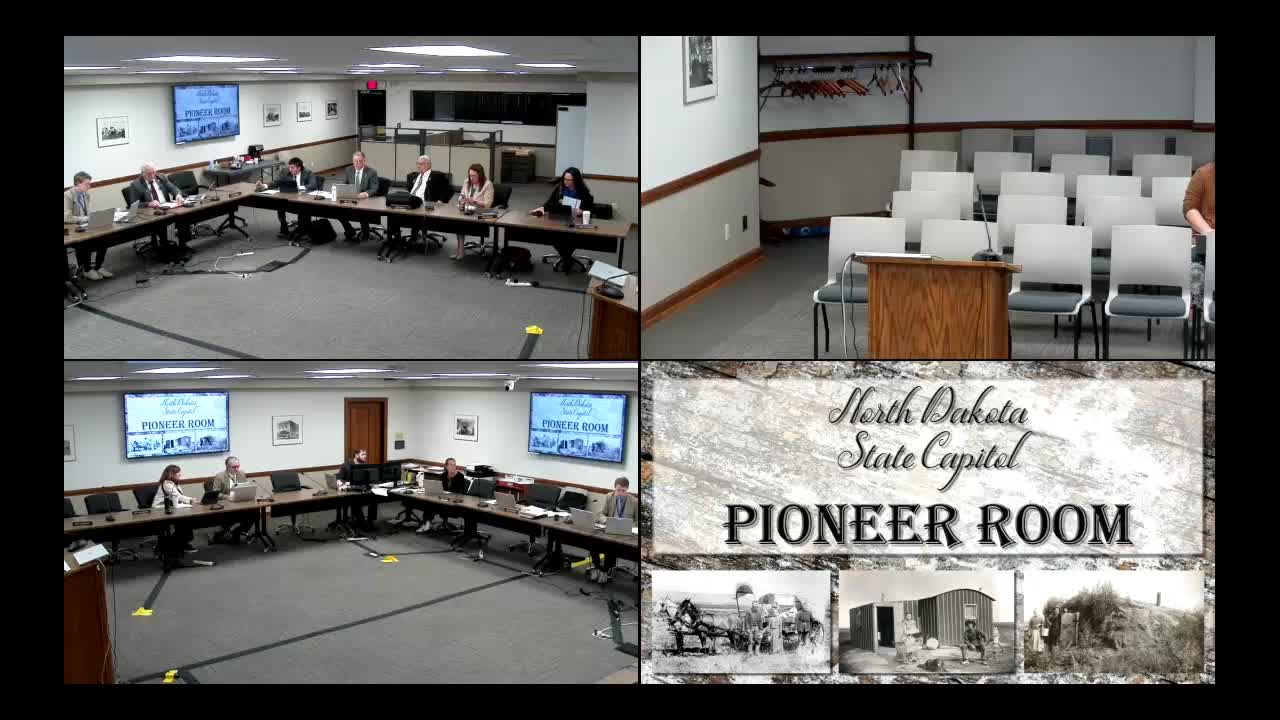Conference committee adopts DHHS amendment clarifying EMS communications in Bill 1322
April 17, 2025 | House of Representatives, Legislative, North Dakota
This article was created by AI summarizing key points discussed. AI makes mistakes, so for full details and context, please refer to the video of the full meeting. Please report any errors so we can fix them. Report an error »

A conference committee on Bill 1322 voted 6-0 to adopt an amendment from the Department of Health and Human Services that clarifies how emergency medical services (EMS) may use communications devices.
The Department of Health and Human Services’ legal counsel, Lisonbee Hicks, told the committee that the amendment would allow the department to regulate primary communications methods while permitting secondary communications through devices such as cell phones. "The Department may regulate the primary communications methods, while permitting secondary communications through other devices such as cell phones," Hicks said. Hicks added the department’s regulations must be consistent with protocols established by the Department of Emergency Services.
The amendment was offered after committee members and witnesses raised reliability and coverage concerns for cell phones and pagers. A committee member who said they work in a hospital described pagers as able to signal when a message is not received in some systems and warned that, during mass-casualty incidents that can overwhelm cell towers, messages routed by cell networks may fail to reach EMS providers. The committee also discussed recent radio-system changes to an 800-megahertz band and an estimate cited during discussion that replacing pagers could cost about $6,700 per staff member.
Hicks told the panel that the existing regulations require other modes of communications such as two-way radios and that the amendment was written to preserve those regulatory relationships while allowing cell phones as secondary devices. "Cell phones are not the primary mode of communications. The department is fine with those being like a secondary mode of communications," she said.
Committee members also noted the bill’s code placement was adjusted during drafting; speakers said a section was moved into a new section (referred to in the discussion as 2327) and that a cross-reference to a federal statute was corrected. One committee member asked that drafters take care when preparing the formal amendment to avoid missing the corrected reference.
A motion to adopt the language in Section 1 as proposed by the Department of Health and Human Services, and to incorporate the remaining Senate changes including the corrected federal code cross-reference, was moved and seconded. The clerk called the roll; Chairman Pfeggley, Representative Kiefert, Representative Rios, Senator Weston, Senator Rohrs and Senator Van Oosting voted yes. The motion carried 6-0-0.
The committee did not take further formal action on other portions of the bill during the meeting. The adopted language directs DHHS to regulate primary EMS communications in coordination with the Department of Emergency Services while allowing other devices, including cell phones, to be used secondarily.
The measure will proceed according to the conference committee process; the committee’s formal recommendation on final enrollment and any next steps were not specified in the recorded transcript.
The Department of Health and Human Services’ legal counsel, Lisonbee Hicks, told the committee that the amendment would allow the department to regulate primary communications methods while permitting secondary communications through devices such as cell phones. "The Department may regulate the primary communications methods, while permitting secondary communications through other devices such as cell phones," Hicks said. Hicks added the department’s regulations must be consistent with protocols established by the Department of Emergency Services.
The amendment was offered after committee members and witnesses raised reliability and coverage concerns for cell phones and pagers. A committee member who said they work in a hospital described pagers as able to signal when a message is not received in some systems and warned that, during mass-casualty incidents that can overwhelm cell towers, messages routed by cell networks may fail to reach EMS providers. The committee also discussed recent radio-system changes to an 800-megahertz band and an estimate cited during discussion that replacing pagers could cost about $6,700 per staff member.
Hicks told the panel that the existing regulations require other modes of communications such as two-way radios and that the amendment was written to preserve those regulatory relationships while allowing cell phones as secondary devices. "Cell phones are not the primary mode of communications. The department is fine with those being like a secondary mode of communications," she said.
Committee members also noted the bill’s code placement was adjusted during drafting; speakers said a section was moved into a new section (referred to in the discussion as 2327) and that a cross-reference to a federal statute was corrected. One committee member asked that drafters take care when preparing the formal amendment to avoid missing the corrected reference.
A motion to adopt the language in Section 1 as proposed by the Department of Health and Human Services, and to incorporate the remaining Senate changes including the corrected federal code cross-reference, was moved and seconded. The clerk called the roll; Chairman Pfeggley, Representative Kiefert, Representative Rios, Senator Weston, Senator Rohrs and Senator Van Oosting voted yes. The motion carried 6-0-0.
The committee did not take further formal action on other portions of the bill during the meeting. The adopted language directs DHHS to regulate primary EMS communications in coordination with the Department of Emergency Services while allowing other devices, including cell phones, to be used secondarily.
The measure will proceed according to the conference committee process; the committee’s formal recommendation on final enrollment and any next steps were not specified in the recorded transcript.
View full meeting
This article is based on a recent meeting—watch the full video and explore the complete transcript for deeper insights into the discussion.
View full meeting
